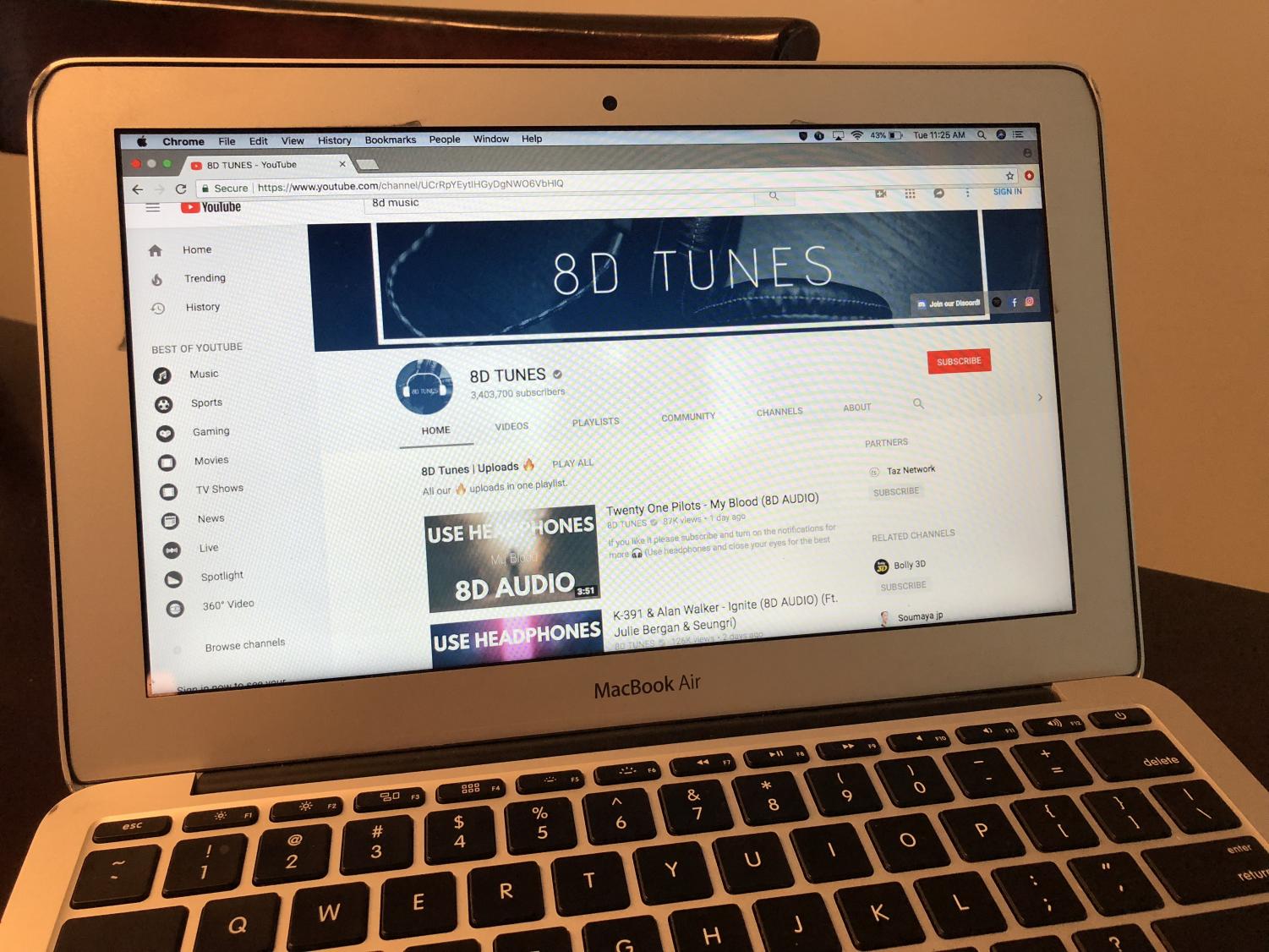In recent months, YouTube videos featuring “8D” music have gained millions of views and have amassed a cult-like following. Because most of the 8D library consists of popular hip-hop and electronic dance music, their audience is made up mostly of young people. But what exactly is 8D music, and why are people losing their minds over it?
First off, the name is a bit misleading. Widely interpreted as meaning music in eight dimensions, the sounds are not quite that intense, and the name 8D was most likely just used to better market the music . A more accurate name might be “3D music”, as one can feel the high quality audio move from ear to ear as if the song was orbiting your brain in what can only be described as a somewhat psychedelic experience.
The official scientific name for this kind of music is ambisonic audio. It is the same type of audio that is used in virtual reality (VR) video games because it gives the player a more engaging and realistic medium for sound. But it is also much more than just a surround sound system; ambisonic audio has the ability to add height to While the exact intricacies involved in creating this three-dimensional music experience are complicated, it goes something like this: the original audio is programmed into a virtual sphere dome, then played back and recorded by a virtual recorder at the center of the sphere. The results are then split into L/R channels, and voila, the audio is now in three dimensions
I first came across 8D audio a couple of weeks ago. Someone mentioned it on my twitter timeline, and sitting in astronomy class with nothing better to do, I grabbed my headphones and typed “8D Audio” into the YouTube search bar. I clicked on the video with the most views: Juice WRLD’s “Lucid Dreams,” with 9.8 million views. After the first five seconds I was absorbed, and by the minute mark I was obsessed. I could not wait to tell someone about this discovery I had made, but more urgently, I searched for the next song I would listen to.
8D music has a vast library of songs, most of them hip hop songs. However, some outliers include an option to listen to Queen’s Bohemian Rhapsody with a multidimensional twist. These kinds of songs do not do 8D justice. The point of listening to music in 8D, for me, is to be more engaged with the song you are listening to. That is why I enjoy listening to EDM in 8D; the electronic noises and the beat drops make me feel like I am at a music festival instead of sitting in calculus class.
It has only been about a couple weeks since I first came across 8D music, but I must admit that it has gotten a little old. The feeling in my ear the first time I listened to it was euphoric, but since then the noises have grown stale. After listening to a few songs, there is not much more to explore other than the fun and trippy way the sound feels like it moves through and around your head.
8D audio, however, is more than just a trendy fad that will go away in a couple months’ time. In fact, we are only experiencing the beginning of a technology that will likely become more and more accessible and practical. Like I mentioned before, ambisonic music and audio effects are already used in VR games today, and just like how VR will one day replace traditional video games, ambisonic audio will replace traditional forms of audio. This technology is still being worked on and developed today, and the full potential of 3D music is still in its infancy. YouTube and Facebook only offer a sliver of what 3D sound is actually like, as both sites limit the size of the audio file that can be rendered. All the complicated science and audio engineering involved with developing ambisonic sound can become a headache though, so it is best to simply kick back, plug in your headphones and drown out the noise.





































